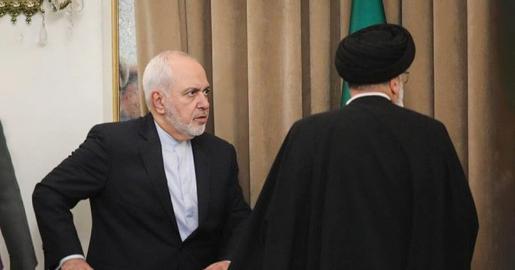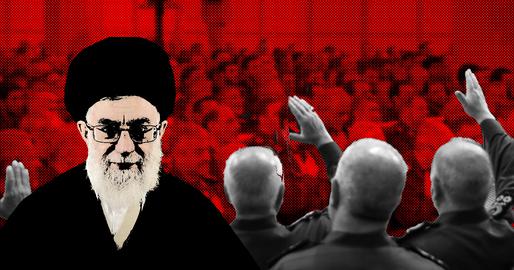When President Hassan Rouhani and Foreign Minister Mohammad Javad Zarif used Twitter to wish Jews Happy Rosh Hashanah back in September 2013, their messages commanded the world’s attention and seemed to herald a new era of social media diplomacy and public exchange on the part of Iran, a nation for years seemingly little concerned with its parlous reputation in the West.
In what was unimaginable just one year prior, it became common to see Iranian and American officials re-tweet, tag, and respond to one another on these digital media platforms, conducting exchanges that signaled a new openness to communication with both each other and the wider public of each other’s nations.


Even last week Rouhani turned to social media again to post a picture of himself, sans clerical robes, watching the World Cup in his living room, conveying that he too was a enamored with football, a moderate leader in touch with his nation’s fervor for the national team.

Digital tools and Iran’s Social Media Landscape:
For much of the past year such moments have spurred discussions over whether social media has the potential to fill the public diplomacy gap that has widened in over three decades of estranged US-Iran relations. Have the realities of digital media and the power of social networking tools really pushed Iran’s leaders to communicate differently with the world?
In May, the term #TwitterDiplomacy emerged to show how social media helped solidify the Interim Nuclear Agreement made back in 2013. NBC News’ Ann Curry coined the term in her web documentary “Twitter Diplomacy: The Making of a Nuclear Deal” where she discusses how social media “helped ease” Iran’s nuclear crisis.
Rouhani and Zarif’s embrace of social networking has helped cast the new administration in a moderate light while also distancing it from predecessor Mahmoud Ahmadinejad’s frequent anti-semitic remarks. For example, in a Twitter exchange with Nancy Pelosi’s daughter, Zarif effectively declared that Holocaust denial was not Iran’s national stance:

And when a carpenter from Texas challenged Zarif’s tweet regarding the use of chemical weapons and militarism, asking “Does that include nuking Israel”, Zarif replied:

Are Social Networking Sites Filling Iran’s Public Diplomacy Gap?
These instances reflect a new awareness in Iran of what public diplomacy—the cultivation or influence of public attitudes in other countries—can do for its ambitions both regionally and on the world stage. Zarif in particular has adeptly used Twitter to engage with a wide international audience and promote the moderate style and policies of the Rouhani government.
For example, when pressure intensified from hardliners back in Tehran, and disagreements emerged over details in the interim nuclear agreement, Twitter became a platform for Iran to clarify and reaffirm its positions.


As Ali Reza Eshraghi, Iran Project Manager at the Institute for War and Peace Reporting (IWPR), points out, “part of Iran wants more visibility in the U.S. and in the international arena and it views social media as a low-cost but effective medium for such a purpose.”
Such Tweets, according to Eshraghi, enabled the Iranian administration to create a new reality instantaneously without relying on other individuals, or media outlets. The strength of such platform being that it “takes away the middle man, and reduces the chances that their message would be distorted.”

Domestically, Twitter and Facebook have proved useful for Rouhani’s administration in bypassing conventional media outlets. Ali Bangi , Director of ASL 19, a research lab dedicated to supporting Iranians bypass Internet censorship, told Iranwire that since the emergence of these new digital media technologies, the Iranian establishment has been able to directly engage with a demographic of young people, so that “they see the government as one of themselves. ”
Globally, engaging with people over such platforms, according to POMED Research Associate Daniel Tavana, helps Rouhani’s administration broaden its constituency and harness that public support in encouraging the international community to support engagement over Iran’s nuclear program.
Eshraghi also points out that “social media has also directly connected Iranian officials with the Arab speaking people of their region especially the Shia population living in Saudi Arabia, Lebanon, and Iraq” and that he finds it strange the Iranian president has not launched his own Arabic Twitter account as a means of improving relations with the Arab speaking world.
But how far can social media diplomacy go in creating greater public support for negotiations, and how instrumental will that support be in giving leaders on both sides political capital against hardliners who oppose diplomacy?
As Bangi and his associate explain, Rouhani’s public diplomacy efforts must be accompanied by policies that aim to enact change, especially on matters his administration promised, like loosening restrictions and improving internet access within Iran.
Though social networking platforms are a sound platform on which to begin a dialogue, Eshraghi says they shouldn’t be the only center-piece of a public diplomacy plan. He says that if real measures—not just virtual ones—are taken, "then it could reduce the level of hostility between the two countries."
Recent polling data from Gallup shows that American perceptions toward Iran have turned positive. The survey, which was conducted this year, shows that half as many Americans view Iran as the United States’ enemy, when compared to 2012. And another Gallup survey shows some decline in the percentage viewing Iran very unfavorably, which now stands at 42 percent, down from 52 percent in 2012.
ASL 19’s associates believe that this shift in perception could, in part, be due to the public relations campaign that is being conducted over social media. They believe that Rouhani’s administration has used social media in an effort to garner international support and use it as a medium to convey their position to the outside world, and they cite Javad Zarif’s Youtube video titled “ Iran’s Message: There is A Way Forward” as an example.
The nearly six minute English clip released in November, right before the interim nuclear agreement was signed, shows Zarif defending Tehran’s nuclear program based on the principles of “dignity and respect.”
Bangi explains that Zarif’s English message on YouTube is an example of how the Iranian establishment is using social networking technologies as a campaign tool to garner support for Iran during the nuclear negotiations.
Without access to such a message, Eshraghi says, Western journalists and interpreters would have had to translate and analyze the words of Iranian officials and convey it in their own frame. Social media has helped Iranian officials shape the narrative around their nuclear ambitions.
But with hardliners back in Tehran seeking to sabotage and tar the Rouhani administration with a wave of arrests and attacks in hardline media, there is also danger that Iran’s online public diplomacy efforts over social networking sites have devolved into simple damage control.
“Diplomacy unlike Tweetplomacy”, according to Eshraghi, “is a time consuming and patience demanding process”, and because of the instantaneous characteristics of social media, he adds, “it is not necessarily useful for diplomacy at all times.”
Enduring change in public perceptions of Iran will largely weigh on substantive change, spin, in the end, can only go so far. Tavana says that social media diplomacy can “broadens the constituency that will support engagement and rapprochement,” but if Rouhani remains besieged at home, facing hardliners who undermine his policies with kangaroo trials and arrests, public diplomacy may simply soften the edge of the Islamic regime’s brutal reputation.
visit the accountability section
In this section of Iran Wire, you can contact the officials and launch your campaign for various problems























comments